
THE ULTIMATE BIRTHSTONE GUIDES
Discover the gemstones of your birth month with the Ultimate Birthstone Guides! From January to December, uncover the knowledge of your modern and traditional birthstones that you probably never knew existed.

The Birthstones of June: Pearl, Alexandrite, and Moonstone
June is unique for having not one, but three birthstones! Pearl, Alexandrite, and Moonstone each offer a distinctive charm, giving those born in June a diverse selection to choose from. Among these, one holds the title of June’s traditional birthstone, while another shines as the modern birthstone. Join us as we explore the rich histories and captivating features of these gems. Whether you’re considering a birthstone piece for yourself or a loved one, our guide will provide all the inspiration you need!
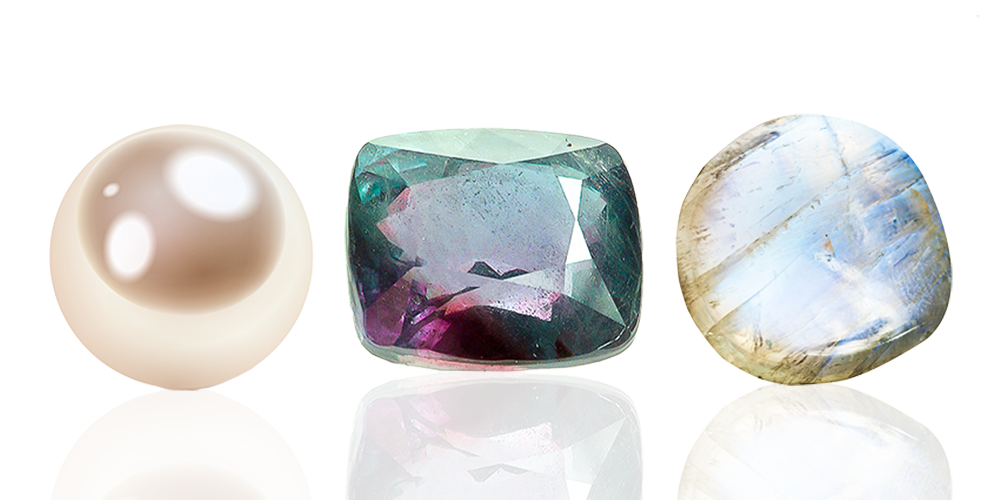
Pearl, Alexandrite, & Moonstone, Chosen Specifically for June
Why Does June Have Three Distinct Birthstones?
June is one of the few months with three birthstones: Pearl, Alexandrite, and Moonstone. This distinction is shared only by August and December.
Birthstones are categorized into two types: modern and traditional. Modern birthstones, often more widely recognized, were officially designated by the Jewelers of America in the 1950s. Traditional birthstones, on the other hand, are those that were commonly linked with their respective months in the early 20th century and earlier. Simply put, many traditional birthstones have become rare and less available in today’s market, leading to the adoption of modern alternatives for some months.
Eager to uncover more about the captivating world of birthstones? Dive deeper with our Ultimate Birthstone Guide!

The Perfection of Pearls
Origins & Features of Pearls
The traditional birthstone for June is the Pearl. The English name “pearl” is derived from the French word “perle,” which originally came from the Latin word “perna,” meaning “leg,” referencing the shape of an open mollusk shell.
Interestingly, the scientific name for pearl-bearing oysters is “Margaritiferidae,” derived from “margarita,” the Old Persian word for pearl. If your name is Margaret, it originates from this word!
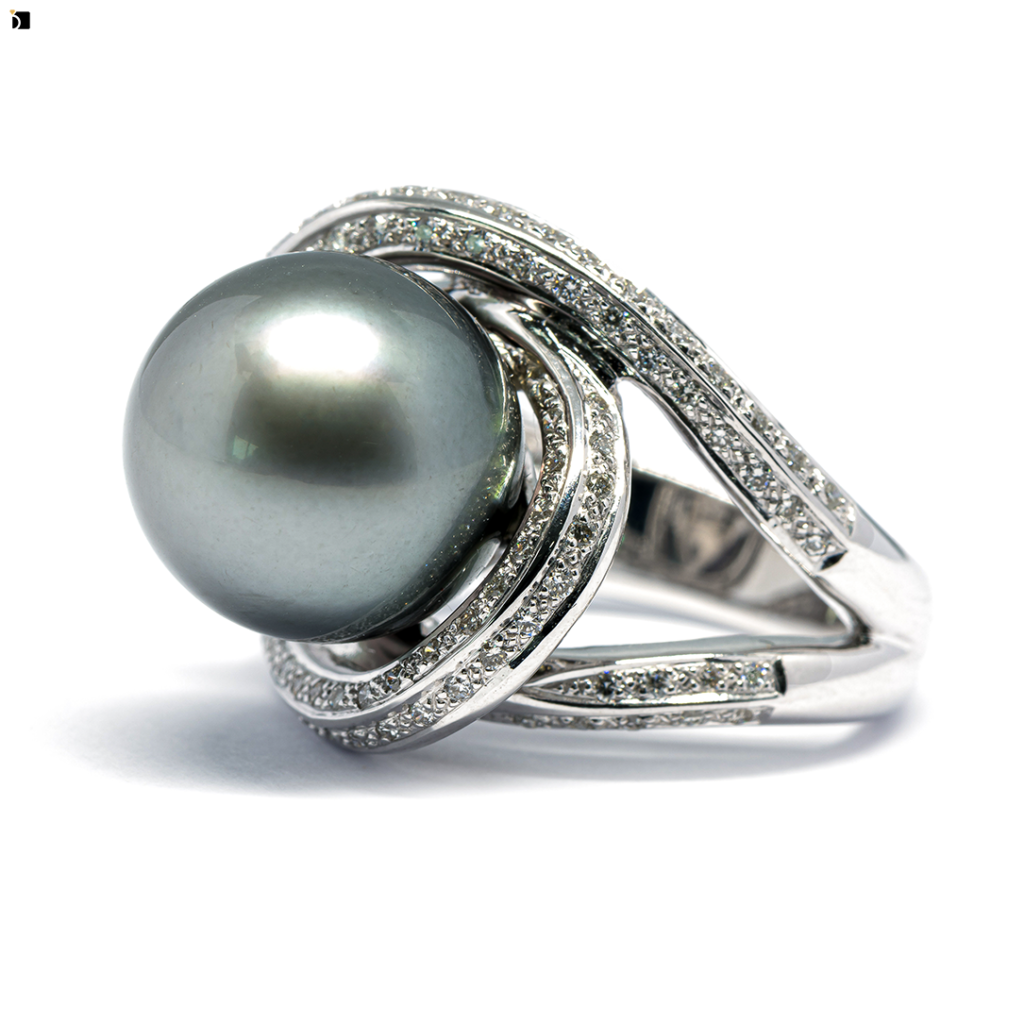
Pearls are found in various bodies of water worldwide, including oceans, lakes, and rivers. These organic gems form inside the tissue of living creatures in either saltwater or freshwater. Mollusks, such as oysters or mussels, produce pearls from a substance called nacre, which is secreted when an irritant, like sand or a parasite, enters their shell.
Pearls are unique among birthstones as they are the only gemstones created by living organisms.
There are two main types of pearls: natural and cultured. Cultured pearls are grown on farms where a piece of mantle tissue is implanted into the mollusk to induce nacre secretion and start the formation process. These cultured pearls dominate the market today, making natural pearls rare and, consequently, the most expensive.
Due to the diverse environments where pearls can grow, they come in various shapes, colors, and sizes. Pearls can be found in white, silver, yellow, green, blue, brown, pink, purple, and black. Natural black pearls are extremely rare, so most black pearls on the market are cultured.

When Pearl Became June’s Official Birthstone
Pearls have been cherished since ancient times for their beauty and symbolism, especially in Greek and Roman cultures where they were linked to purity, wisdom, and the goddess Venus—believed to be born in June. This connection helped establish pearls as a natural fit for the month. While their association with June dates back centuries, it became more standardized in 1912 when the American National Retail Jewelers Association officially named pearl as one of June’s birthstones. Today, pearls remain a timeless and elegant choice for anyone born in June.
If you or someone you know was born in June, pearls are a timeless and elegant choice for birthstone jewelry. Their natural beauty and symbolic ties to purity, wisdom, and love make them especially meaningful for personal gifts. Pearls are also traditionally associated with the 30th wedding anniversary, making them a perfect way to celebrate three decades of love with a classic and sentimental piece.
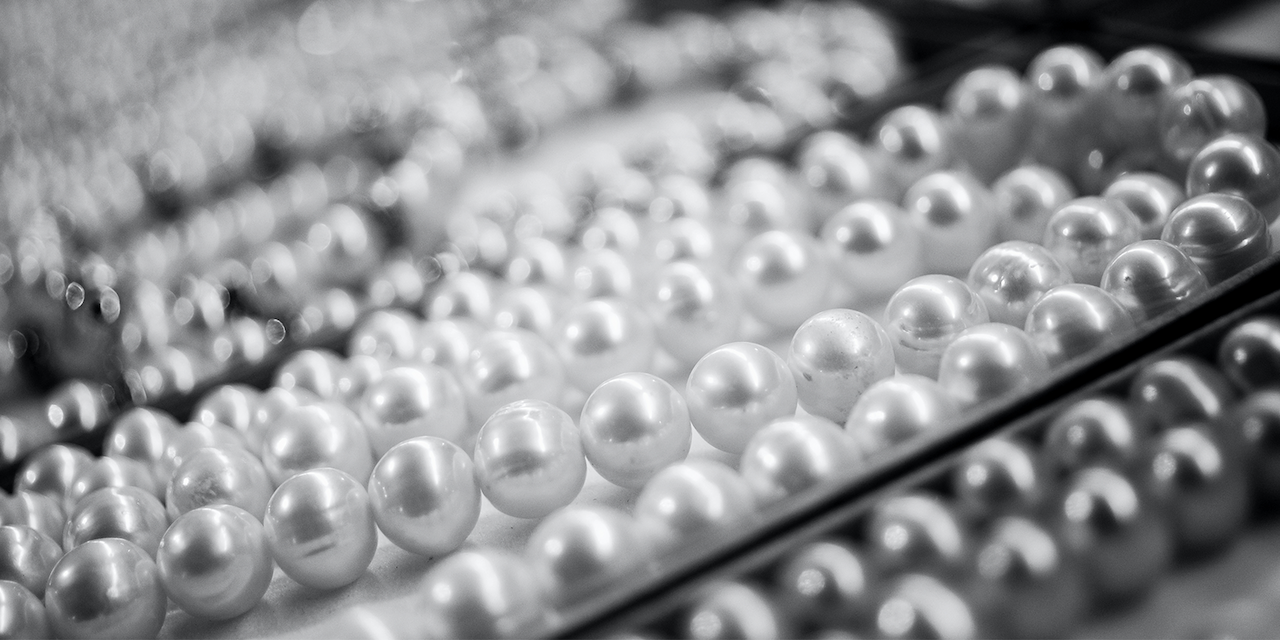
The Rich History and Deep Symbolism of Pearls
Cultural Significance: Pearls in Lore and Legend
Natural pearls are found in the Persian Gulf and the Indian Ocean, while freshwater cultured pearls primarily come from China. Among the most renowned pearls are Mikimoto Pearls. Kokichi Mikimoto invented the technique of seeding an oyster with an irritant, pioneering the creation of cultured pearls.
These exquisite gemstones symbolize wisdom, integrity, purity, loyalty, and serenity. In ancient times, pearls were also believed to possess healing properties, promoting serenity, protection, security, confidence, and enlightenment—qualities that align closely with their modern symbolism. In ancient Rome, pearls signified high status and wealth, and some knights during the Crusades wore them as protective amulets.
Buying the Right Pearl For You
When selecting the perfect pearl, it’s important to consider the distinct qualities that make this gemstone so unique. Unlike faceted stones, pearls are valued based on a different set of criteria—primarily size, shape, color, luster, surface quality, and whether they are natural or cultured. Natural pearls are incredibly rare and therefore much more valuable than their cultured counterparts.

While perfectly round pearls are traditionally the most sought after, other shapes such as baroque or teardrop offer a unique beauty and character of their own. Luster is especially crucial, as high-quality pearls exhibit a brilliant, mirror-like glow that enhances their appeal. Whether you’re drawn to the classic elegance of white or the romantic allure of pink and lavender, finding the right pearl comes down to choosing the combination of qualities that best complements your personal style.
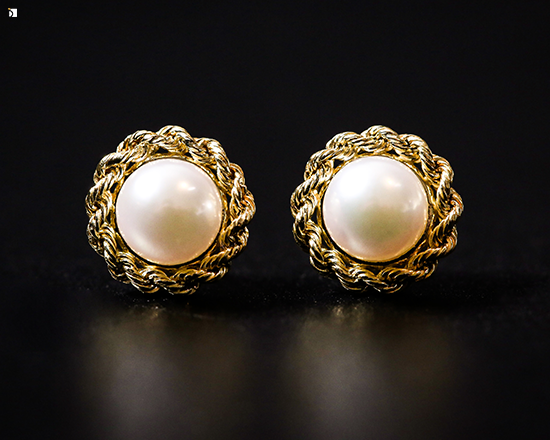
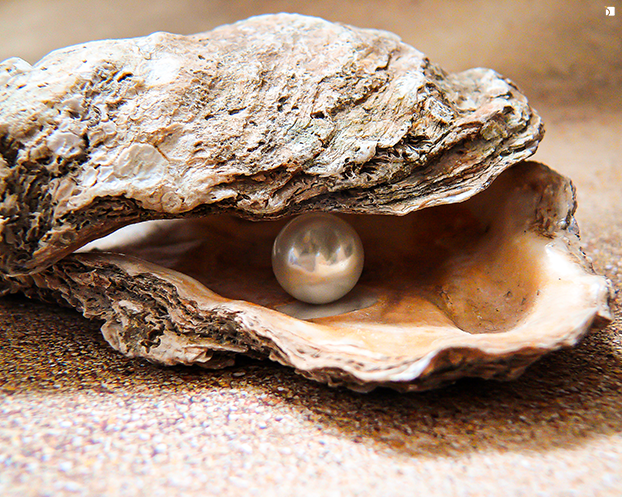
Essential Tips for Maintaining and Caring for Your Pearls
Understanding Proper Pearl Care
Pearls have a hardness of 2.5 to 3.0 on the Mohs scale. To put this in perspective, quartz, which has a hardness of 7 – 7.5, is present in the dust particles that float in the air and settle on uncleaned surfaces in your home. These particles can remove the polish from your table and the finish from your car. Diamonds, the hardest gemstone, have a hardness of 10, while talc, the softest, can be scratched by a fingernail.
Because pearls are relatively soft, they require special care to maintain their beauty. Store pearls and pearl jewelry separately from other jewelry to prevent scratches.
For more information on the history and proper care of your pearls, visit our Ultimate Pearl Guide!
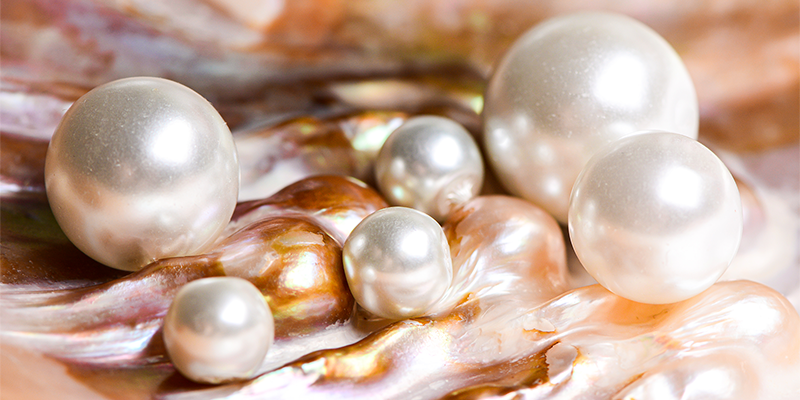

Astonishing Alexandrites
Origins & Features of Alexandrites
The modern birthstone for June is Alexandrite, a stunning multi-colored gemstone. Named after Alexander II, Alexandrite was discovered on his birthday in 1834, although the gemstone deposits were first found in 1830 in Russia’s Ural Mountains.
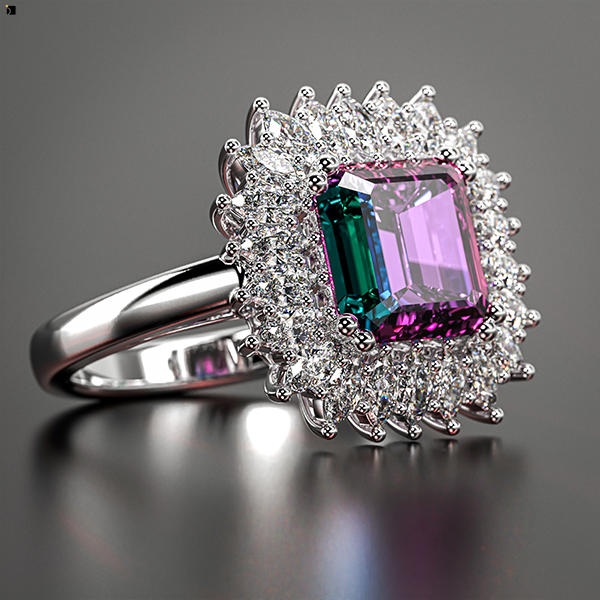
Alexandrite is a rare variety of the mineral chrysoberyl, known for its remarkable ability to change colors under different lighting. The most sought-after Alexandrites exhibit a vivid green or blue hue in fluorescent light and shift to red or purple in incandescent lighting. These striking color changes made Alexandrite popular in Russia, as the green and red hues matched the colors of the imperial Russian army.
Natural, large Alexandrites are among the most expensive colored gemstones in the world.
Due to their rarity, most Alexandrites larger than a carat and free of inclusions are likely synthetic or lab-grown. The gemstone’s unique color-changing ability is due to its uncommon chemical composition, which includes traces of chromium, also responsible for the coloring of emeralds.
When Alexandrite Became June’s Official Birthstone
Alexandrite is a relative newcomer to the list of June birthstones, officially joining the ranks in 1952. That year, the Jewelry Industry Council of America expanded the standardized birthstone chart, adding alexandrite alongside pearl and moonstone as one of the designated gems for June. Prior to this update, only pearl and moonstone held the title.
The addition of alexandrite brought a rare and captivating option to June’s lineup—especially for those drawn to its remarkable ability to change color from green in daylight to red or purplish-red under incandescent light. Its inclusion added a touch of modern mystique to June’s birthstone collection, making it one of the few months to boast three official gems, each with its own distinct appeal.
The Rich History and Deep Symbolism of Alexandrites
Cultural Significance: Alexandrites in Lore and Legend
This astonishing gemstone is now found in Brazil, Sri Lanka, and East Africa, as the original mines in the Ural Mountains have been exhausted.
Alexandrites symbolize luck, prosperity, joy, hope, purpose, and intellect. As a unique gemstone, they also hold unique associations, such as a connection to the crown chakra, which is believed to endow them with mystical powers that promote a strong sense of universal love, creativity, imagination, and intuition. Alexandrites are also recommended for those recovering from prolonged illness or surgery.
Buying the Right Alexandrite For You
When selecting the perfect alexandrite, it’s essential to consider the traditional Four C’s—Color, Clarity, Cut, and Carat—but also to pay close attention to the gemstone’s extraordinary color-changing ability. Alexandrite is one of the rarest and most fascinating gemstones in the world, known for its remarkable shift from green in daylight to red or purplish-red under incandescent light. The intensity and sharpness of this color change are among the most critical factors in determining value.

While clarity and cut play important roles, it’s the dramatic color shift and strong saturation that truly set high-quality alexandrites apart. Stones from notable origins like Russia and Brazil often command premium prices, especially those with exceptional clarity and larger carat weights. If you’re seeking a gem with both elegance and intrigue, a vibrant, well-cut alexandrite with a bold color transformation is a stunning and highly prized choice.
If you or someone you know was born in June, Alexandrites are a wonderful alternative to pearls for June birthstone jewelry pieces. This gemstone is also associated with the 55th year of marriage, making it a perfect choice for celebrating this special anniversary with a unique and meaningful gift.

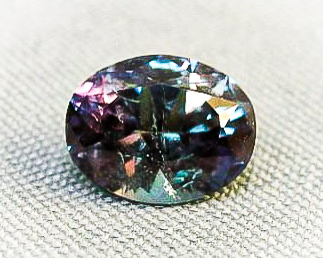
Essential Tips for Maintaining and Caring for Your Alexandrites
Understanding Proper Alexandrite Care
Alexandrites have a hardness of about 8.5 on the Mohs scale, making them relatively hard and durable. This toughness makes Alexandrites an excellent choice for everyday jewelry.
Like diamonds, caring for Alexandrites is relatively straightforward compared to more delicate gemstones like pearls. However, proper maintenance is still crucial to preserve their sparkle and brilliance. To clean your Alexandrites, use warm water, mild soap, and a soft, lint-free cloth for drying. Regular cleaning will help maintain their stunning appearance.
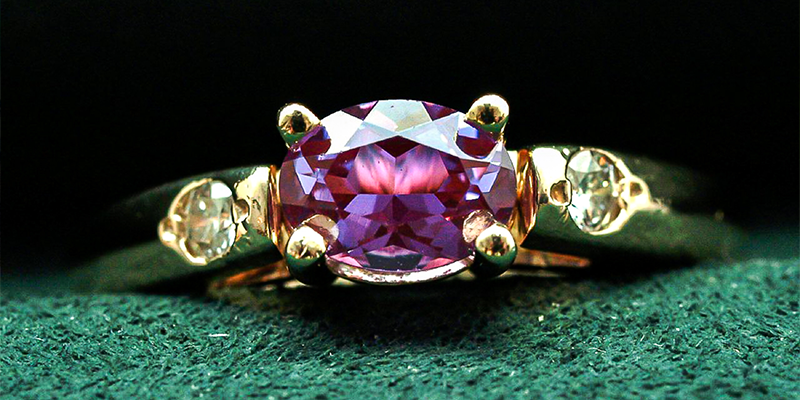

Magnificent Moonstones
Origins & Features of Moonstones
The third birthstone of June is the Moonstone. Named by the Roman natural historian Pliny for its likeness to the moon, this gemstone also goes by the name Selenite, derived from the Greek word “selene,” meaning moon.
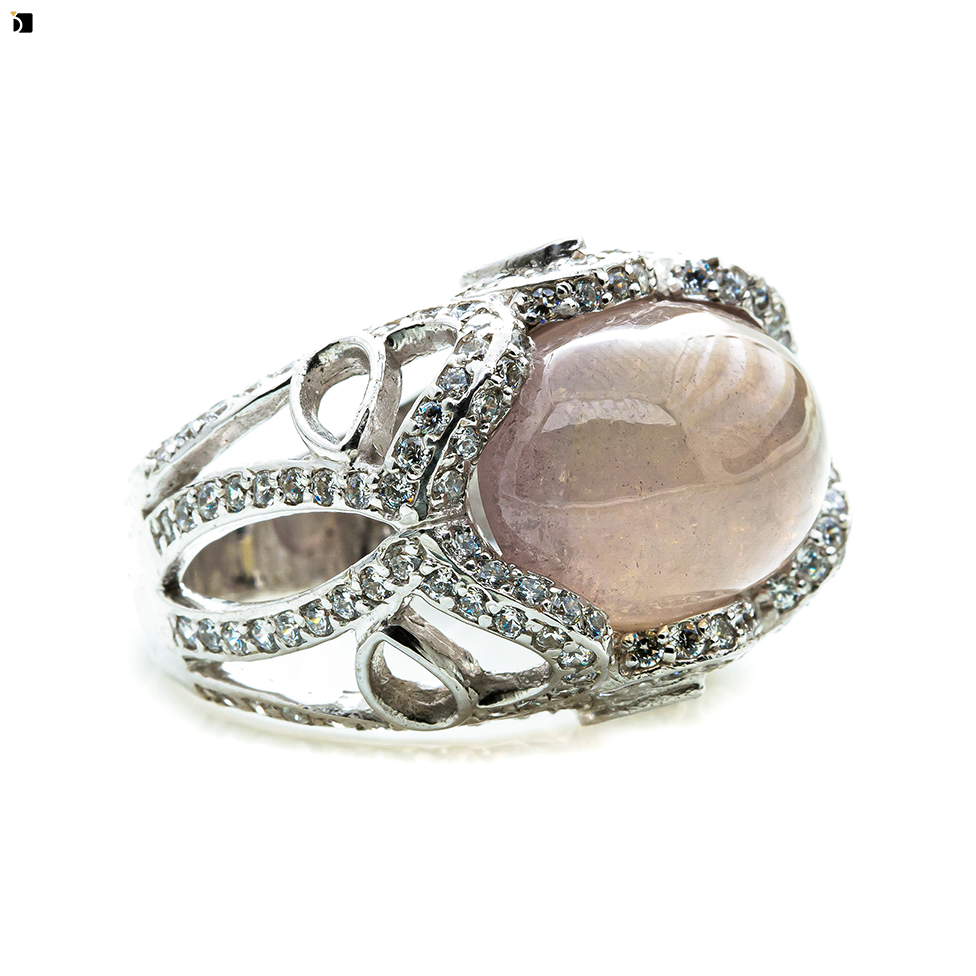
Moonstone is the best-known gem of the feldspar group of minerals, being a sodium potassium aluminum silicate. Its distinctive glow, known as adularescence, creates a light that shimmers across the entire stone. Moonstones can be found in various locations, including the United States, India, Sri Lanka, Brazil, Madagascar, Myanmar, and Tanzania. They come in a variety of shapes, sizes, and colors, including blue, green, pink, grey, white, and even rainbow.
The rarest type of moonstone is the fine moonstone of the rainbow variety, which is becoming increasingly scarce.
When Moonstone Became June’s Official Birthstone
Moonstone’s connection to June has both mystical and modern roots. Moonstone has long been associated with lunar energy, femininity, and emotional balance. Its link to the moon made it a natural complement to the themes of summer and the zodiac signs of June. In 1912, the American National Retail Jewelers Association officially recognized moonstone as one of the birthstones for June, alongside pearl. With its dreamy appearance and symbolic meaning, moonstone continues to be a meaningful and enchanting option for those born in this month.
The Rich History and Deep Symbolism of Moonstones
Cultural Significance: Moonstones in Lore and Legend
The history and symbolism of moonstones are deeply connected to their namesake, the moon.
Moonstones symbolize divine feminine energy and are associated with the powerful lunar cycle. This birthstone represents good luck, intuition, inspiration, success, and fortune. The moonstone’s energy is believed to evoke tranquility, nourish feminine energies, and ignite passion. Often used for meditation, moonstones are also known as the lover’s stone, helping to restore love’s tranquility.
In India, moonstones are considered sacred and are said to have been embedded in the forehead of Ganesh, the four-handed god of the moon, since ancient times. The Romans believed moonstones were formed by moonlight and reflected the image of the moon goddess, Diana. They were thought to protect night travelers and earned the name “Traveler’s Stone.” In Asian cultures, moonstones were traditionally used as good luck charms and a cure for insomnia. Ancient Asians also believed moonstones contained a live spirit due to their moving light and glow.
Buying the Right Moonstone For You
When selecting the perfect moonstone, it’s important to consider the Four C’s—Color, Clarity, Cut, and Carat—but also the gemstone’s most defining feature: adularescence, the ethereal glow that seems to float across its surface. The most prized moonstones display a vivid blue sheen that appears to shimmer from within, especially when set against a transparent, colorless body.
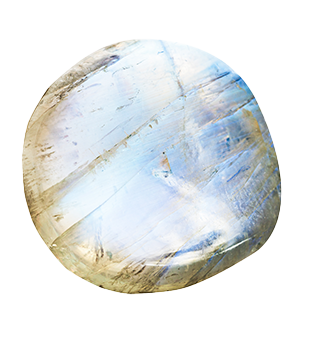
While moonstones can be found in various hues such as peach, brown, or gray, those with a clear base and intense adularescence are the most valuable. Typically cut as cabochons to best showcase this optical phenomenon, moonstones may also appear faceted in more contemporary designs. Larger, high-quality stones with minimal inclusions and strong blue sheen—especially those sourced from historically rare locations—are especially sought after by collectors and enthusiasts alike.
If you or someone you know was born in June, moonstones offer a magical and meaningful alternative to traditional pearls. Known for their soft, glowing sheen and symbolic ties to intuition and emotional balance, moonstones make beautiful and thoughtful birthstone jewelry. They’re also associated with the 13th wedding anniversary, making them a lovely choice for commemorating this milestone with a unique and ethereal gift.
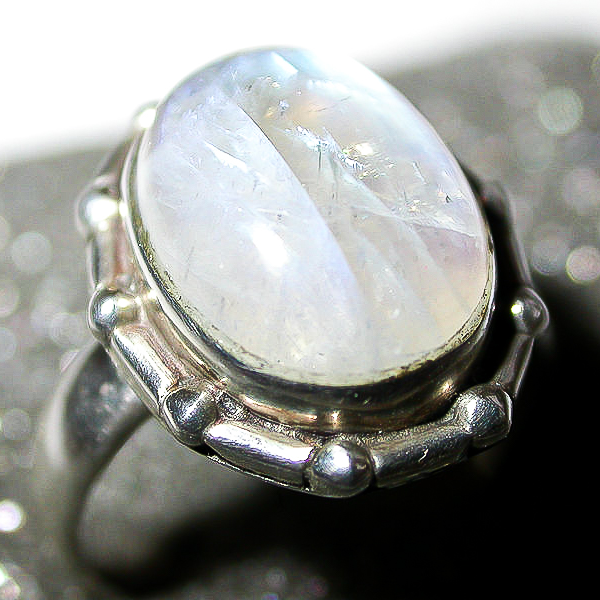
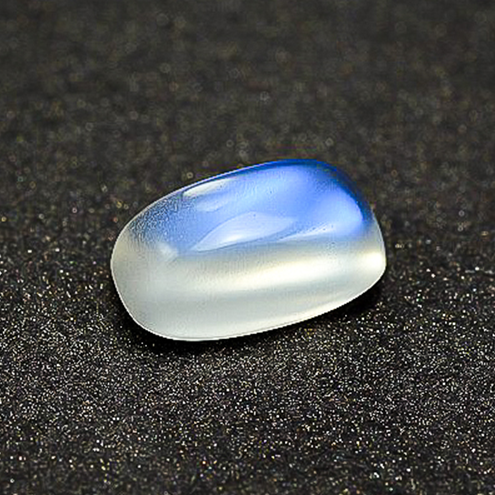
Essential Tips for Maintaining and Caring for Your Moonstones
Understanding Proper Moonstone Care
Moonstones have a hardness of 6 – 6.5 on the Mohs scale and are known for their relatively poor toughness. They are sensitive to high heat and may crack, so it’s best to clean them gently with warm water and mild soap, using soft brushes and cloths for drying.
To ensure longevity, moonstones are often set in pendants and brooches, which are less prone to damage compared to rings or bracelets. Proper care will keep your moonstone jewelry looking beautiful for years to come.
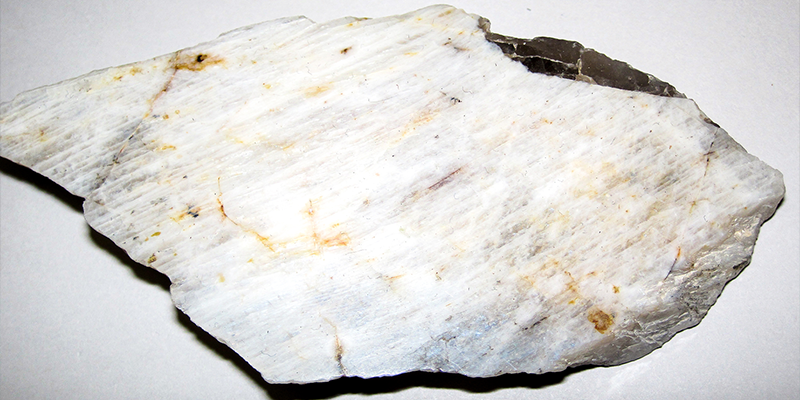

Revive Your Treasured Pearl, Alexandrite, or Moonstone Jewelry
Are you considering the restoration of a beloved piece of birthstone jewelry? You’ve found the perfect place to revive cherished memories.
Gemstones breathe life into any piece of jewelry but are also prone to the most wear and tear. Whether you’re dealing with a loose, lost, or scratched Pearl, Alexandrite, or Moonstone, we take the revitalization of your precious items to heart. No matter the gem or the damage, we are committed to making your jewelry shine as brilliantly as the day it was first worn.
Our team of specialists is equipped to meticulously source the precise type of gem needed for your valued piece. We recognize that each gemstone is unique and demands careful, specialized attention. Our Professional Stone Sourcing team ensures that every gem, even those that might typically go unnoticed, is replaced with a stone that matches the original in quality and fit.
Explore our Gemstone Replacement Services page to learn more about how we can help restore your Emerald or Agate to its former glory.
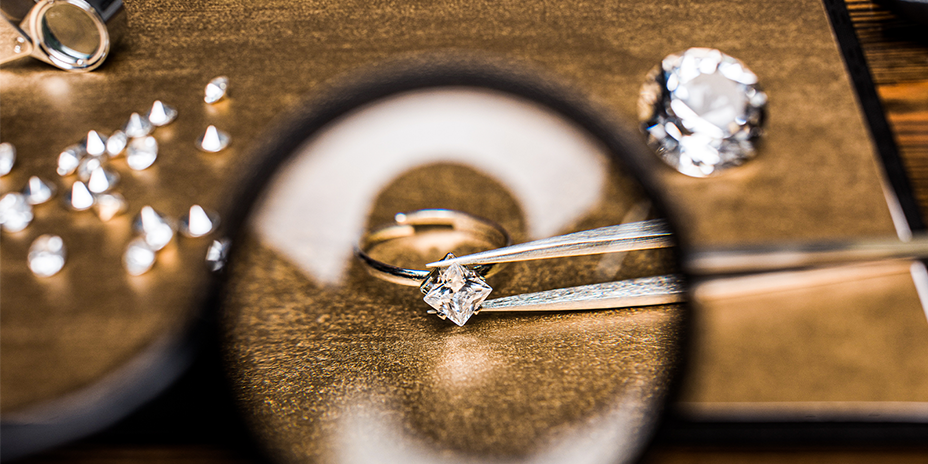
Originally Published May 24, 2022, Updated and Expanded June 11, 2025

Resources:
- June Birthstone Information: https://www.americangemsociety.org/
- June Birthstone Information: https://www.gia.edu/
- June Birthstone Information: https://www.gemsociety.org/
Have Questions?
The Ultimate Birthstone Guide
“If you were born in June, your month’s birthstones are Pearl, Alexandrite, and Moonstone.
If you didn’t already know, there are some months that have multiple birthstones, whereas some only have one. Traditional birthstones are gemstones that were most commonly associated with its respective month in the early 20th century and even beyond, with Ancient Greek and Roman philosophers associating these gemstones with the star signs. Those that are more commonly known in this day and age are the modern birthstones, which were officially named by the Jewelers of America in the 1950’s.
If you would like to learn more about birthstones in general, visit our Ultimate Birthstone Guide!“
Clean & Polish Services
“A basic clean, polish, and inspection is part of the routine care and maintenance needed to keep your jewelry looking like new. The inspection process includes looking for loose stones, bent prongs, and any damage to the metal or stones that need to be repaired.”
Stone Setting Repair
“A stone setting repair can be a simple re-tipping of a worn prong (which is considered routine care and maintenance) or the complete rebuilding/replacing of a damaged prong. In the case of severe damage, the entire head of the ring may need to be replaced.
Regardless of whether or not the prongs are compromised due to normal wear and tear or a result of accidental damage, we can provide the routine care and maintenance in order to ensure you do not lose a stone in your setting.”
Gemstone Replacement Services
“The process of a Gemstone Replacement is simple enough, yet requires trained eyes to be able to make a flawless switch. We aim to leave no trace of our work, which means not only will your setting be perfected, but the gemstone we choose will complete your jewelry piece effortlessly.”
- Pair of Loose Alexandrite Gemstones: https://commons.wikimedia.org/
- Loose Alexandrite Gemstone: https://commons.wikimedia.org/
- Alexandrite Ring: https://commons.wikimedia.org/
- Moonstone Ring: https://commons.wikimedia.org/
- Natural Blue Moonstone: https://commons.wikimedia.org/
- White Moonstone: https://www.flickr.com/
Explore the Magic of Our Gemstone Services!
We are proud members of the

Our team includes gemologists certified by

